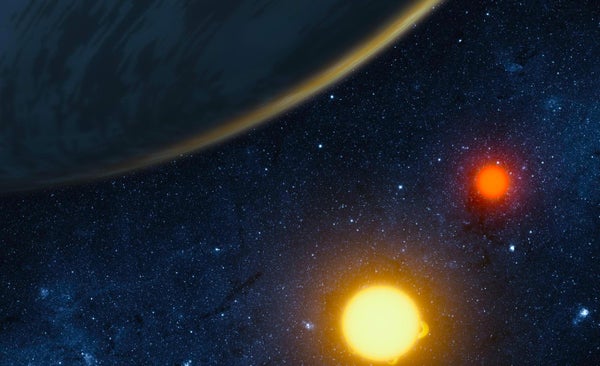This article was published in Scientific American’s former blog network and reflects the views of the author, not necessarily those of Scientific American
As the latest episode of our 40-year relationship with Star Wars thunders into movie houses in the US, it’s interesting to reflect for a moment on the many ways that we can accept scientific sleights of hand in the service of telling a decent human (and alien) story. I’m particularly attuned to this because of recently authoring The Zoomable Universe, which essentially does the opposite – it presents a detailed and accurate description of the extent of our scientific understanding of reality while exploiting a reader’s senses and emotions with glorious visuals and brain food.
As any casual reader or viewer of science fiction will know, one of the biggest challenges facing any kind of space opera is the brutal reality of the scale and emptiness of the cosmos. Even traveling at the speed of light is incredibly tedious because of the vast distances to cover.
Actually, even traveling at several times the speed of light is about as exciting as watching paint dry. Our galaxy spans about 1021 meters in diameter, or about 100,000 light years. So there’s just no popping out for a drink on the other side of the Milky Way, or ordering delivery of those special noodles from the galactic antipode.
On supporting science journalism
If you're enjoying this article, consider supporting our award-winning journalism by subscribing. By purchasing a subscription you are helping to ensure the future of impactful stories about the discoveries and ideas shaping our world today.
Either your story builds this in as a critical plot device (the rebooted Battlestar Galactica is one example) or invents a near instantaneous form of propulsion (but often slow enough for at least one decent reflective monologue or character argument). Even though we presently have no real evidence that such travel is possible (the often-quoted Alcubierre drive is pretty, but demands some heady stuff like negative energy density, the possibility of which is entirely hypothetical), if it were then a whole bunch of other stuff comes together.
For example, pan-galactic civilizations could exist in recognizable forms. Without hyper-fast travel then conventional trade (by Earth standards) in any kinds of goods, or even information, becomes less and less plausible. Consequently, it would be less and less likely that a star-spanning civilization, with some kind of government that we’d recognize, could ever emerge – there would be no easy cohesion. If there were a pan-galactic culture it would likely be very alien in structure.
Star Wars handles this with nifty much-faster-than-light travel, allowing it to build a universe of all-too recognizable politics and conflicts. But it also plays fast and loose with a bunch of other physics and issues of scale. All those sparkling space battles, or deliriously whirly spacecraft assaults and dogfights, stretch our understanding of physics further than a wookie’s bandolier. Ships turn on a dime, navigate in extraordinary precision through obstacles, zipping here and there at velocities that beggar belief in the real universe. Any soft humanoid would be squished to a pulp in these maneuvers by g-forces – so naturally there must be some unspoken ‘inertial dampers’ at play.
The list goes on: from gravity to radiation, communications to conservation of momentum. But the point I want to make isn’t that all of this is scientifically inaccurate, I personally couldn’t care less. The real point is that these successfully imagined realities do have an underlying logic to them. They are internally self-consistent. That’s part of the reason we can happily suspend disbelief, because in these fictional worlds things do make sense; because of A, then B happens, and that means C will occur in another context.
Most of us have an innate feel for that kind of self-consistency. It’s part of the physical logic that operates around us on a daily basis. We don’t expect random outcomes for phenomena that have shown themselves to be repeatable time and time again.
In that sense, a tale like Star Wars, with its own rules, is deeply rooted in our most rational and productive ways of assembling a scientific picture of the world. We seek consistency in reality. But there is perhaps a cautionary tale in here too. We can be so willing to suspend disbelief in the service of a good story with a set of stable rules that we can sometimes risk being led on a wild-goose chase.
That’s not just worth remembering in science, it’s also pretty vital to remember as our human world faces increasingly insidious forms of story-telling and self-perpetuated misinformation.
The real quest to find a believable universe is far more important and noble than any fantasy you’re likely to see in a movie. But some of the tools used in service of that goal are the same.
